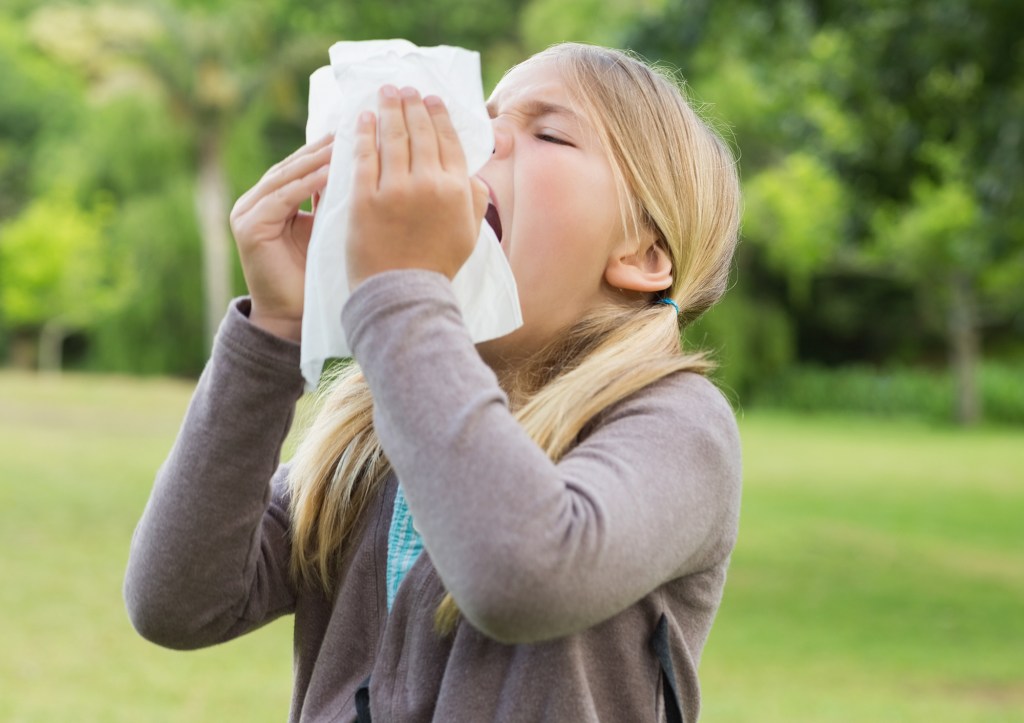Seasonal allergies are nothing to smell – they can cause sneezing, itchy eyes, a wind nose and a cough that can last for weeks or even months.
At NYC, spring begins the tree pollen season, followed by grass pollen during the summer and pollen of weeds in late summer and autumn. Crossings that hold pollen from other regions, combined with warmer temperatures, are making the symptoms more unpredictable.
When breathing in the pollen, your immune system releases histamine and other inflammatory mediators, causing common allergy symptoms. Unlike a cold, which is usually cleaned within two weeks, allergies can last much longer, often starting with a running nose and progressing to nasal blockages, sinusitis, fatigue and headaches.
The good news? You don’t have to live in a bubble to manage allergies.
As an allergy patient, my main advice is to start medication early and use them regularly throughout the season. Here’s what is inside my set of seasonal allergy tools.
Prescription medicine

Most first-line treatments are available at any pharmacy-no recipe needs.
Nasal spraying
While many allergy suffers first reach antihistamines, a nasal spray should be daily. Steroid nasal sprays reduce swelling and inflammation in nasal passages, helping relieve blockages over time. They do not work immediately, but should be used constantly for a few days or up to two weeks before complete relief.
Look for nasal sprays containing fluticasone or triamcinolone. I always recommend gathering when they are on sale!
For better results, aim for spray towards your ear, rather than running your nose, for better suction. Nasal rinsing can also help redness of allergens and irritants we breathe throughout the day.
Oral antihistamines
Liquid antihistamines or pill can provide rapid relief from the symptoms of seasonal allergies. For children with severe symptoms, the combination of antihistamines with a nasal spray can be even more effective.
Look for the brand or general versions of non-wedious antihistamines such as cetirizine, levocytirizine, loralatadine and fexofenadine. These usually begin to work within 30 minutes and provide relief for 24 hours, compared to diphenhydramina, which can make children sleep and last only six hours.
Ideally, start taking antihistamines and nasal spraying about two weeks before spring, usually around Valentine’s Day. If you haven’t started yet, it’s not late – start now!
Eye drops
For itching, watery eyes, consider adding an allergy eye drop to your routine. Olopatadine can help prevent histamine release, the main stimulation for eye irritation.
Eye drops come to different concentrations, and for children with severe symptoms, I recommend the highest concentrations once a day for relief throughout the day. Natural tears and warm compresses can also calm the irritation and keep your eyes calm.
Beyond medicines

Allergy shots (immunotherapy)
If OTC medication is not shortening it, immunotherapy, such as allergic shootings, may be the answer.
Most allergists do not recommend allergy shots for children under 5 years of age, but for children and adolescents of school age with constant symptoms, allergic shootings can help desensitize the immune system to allergen.
Other options include sublingual immunotherapy, which is the administration of food and medicines approved for allergies to weeds, weeds and dust.
Lifestyle adjustments
Polen is small and can travel long distances, so it is important to track local pollen counts to minimize peak time exposure. I use an app called Allergy Plus, which also monitors air quality.
Stay inside on high pollen days and choose activities like movies instead of the park. If you make ventures, take your medication, including asthma inhalers and consider an extra dose if necessary. Keeping closed windows in your home and the car can help keep pollen out.
Once you have been out, wash or shower immediately, wash your hair and change into clean clothes to avoid spreading allergens indoors. Wearing a N95 or surgical mask can help block pollen, while wide sun glasses and a hat can prevent pollen from adhering to the hair.
And don’t forget to direct an air purifier as an additional precaution. I have some accessories in my home due to my allergy to dust mites. For a self -made air purifier, the Environmental Protection Agency has a great suggestion.
When you see an allergist
If the symptoms persist despite using your set of allergy tools, it may be time to see an allergist to identify the root cause. Children should not lose school, and should not lose work due to seasonal allergies.
If allergies lead to complications such as chronic ear or sinus infections, asthma attacks or eczema flames, a specialist can help.
Allergy testing can provide peace of mind and important information about the exact reason for smell and sneezing. What looks like pollen allergies can be driven by dust mites or pets allergies, which require medications throughout the year and various management strategies.
In the pediatric allergy program, we can guide your family through treatment and test options. In addition to doctors and nurses, our team includes a children’s life specialist and a psychologist, provided by the Sala Sala for Child and Family Care, which can provide comfort and support during testing.
While some people exceed seasonal allergies, the reception game is unpredictable. Taking pro -active steps before the allergy season can make a big difference in the way you feel. With the right medicines, lifestyle adjustments and expert guidance, seasonal allergies do not have to take your life!
Kanwalji (Rupam) Brar, MD, is a specialist in pediatric allergies with advanced training in dermatology. She sees patients in the pediatric allergy program at Hassenfeld Children’s Hospital in NYU Langone. It manages all the allergic conditions of children, including food allergies, rhinitis, eczema and asthma.
#Spring #Allergy #Allergy #Complete #minimize #symptoms
Image Source : nypost.com